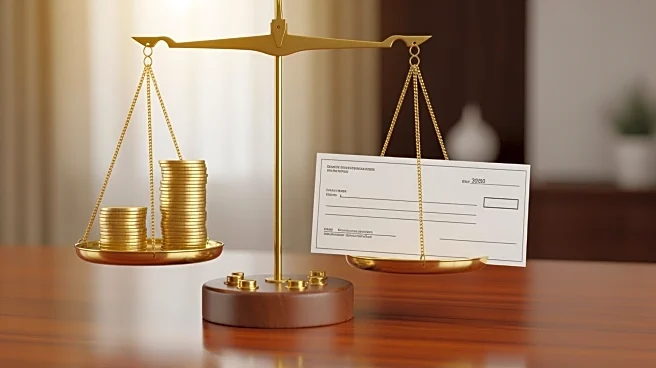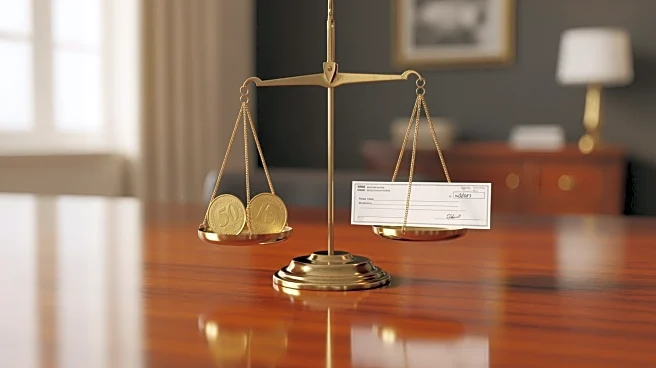What's Happening?
President Trump has announced plans to issue $2,000 tariff rebate checks next year, aiming to provide financial relief to Americans facing economic challenges. The proposal is based on the substantial
revenue generated from new tariffs, projected to raise $158.4 billion in 2025 and $207.5 billion in 2026. However, experts express skepticism about the feasibility of these checks, citing significant obstacles such as the mismatch between projected tariff revenue and the cost of the proposed dividends. The Tax Foundation's analysis suggests that the checks could cost significantly more than the revenue generated, raising concerns about the practicality of the plan. Additionally, congressional approval is required, and there is uncertainty about whether there is sufficient support for the proposal, given the existing national debt and budgetary constraints.
Why It's Important?
The proposal for tariff rebate checks is significant as it highlights the ongoing debate over economic stimulus measures and their impact on the U.S. economy. While the checks could provide immediate financial relief to individuals, there are concerns about their potential to exacerbate inflation by increasing consumer demand without corresponding supply increases. This echoes criticisms of previous stimulus measures, which were blamed for contributing to inflationary pressures. Furthermore, the reliance on tariff revenue to fund these checks raises questions about the sustainability of such a strategy, especially if legal challenges to the tariffs succeed. The proposal also underscores the political dynamics at play, as lawmakers weigh the benefits of direct payments against fiscal responsibility and long-term economic stability.
What's Next?
The future of the tariff rebate checks depends on several factors, including congressional approval and the outcome of legal challenges to the tariffs. If the Supreme Court rules against the tariffs, it could significantly impact the revenue available for the proposed checks. Additionally, economic conditions will play a crucial role; if the job market deteriorates, there may be increased pressure to implement stimulus measures to prevent a recession. Stakeholders, including economists and policymakers, will continue to debate the merits and risks of the proposal, with potential adjustments to the plan based on evolving economic indicators and political considerations.
Beyond the Headlines
The proposal raises broader questions about the use of tariff revenue for domestic economic policies and the implications for international trade relations. The reliance on tariffs as a funding mechanism could strain relationships with trading partners and lead to retaliatory measures, affecting global trade dynamics. Moreover, the focus on direct payments as a stimulus tool highlights the challenges of balancing short-term relief with long-term economic health, as policymakers navigate complex fiscal and monetary landscapes. The proposal also reflects the broader discourse on economic inequality and the role of government intervention in addressing financial disparities.












